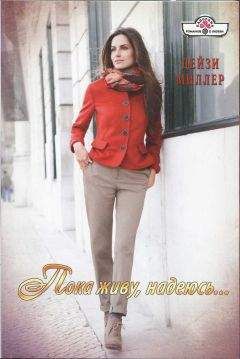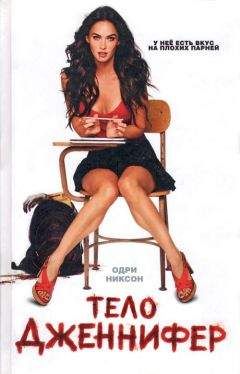Ричард Овери - Сталин и Гитлер
78. Labin, Stalin’s Russia, p. 68.
79. H. G. Baynes Germany Possessed (London, 1941), pp. 107–8.
80. Schmölders, Hitlers Gesicht, p. 145.
81. Bonnell, Iconography of Power, pp. 148, 166.
82. Labin, Stalin’s Russia, pp. 64–5.
83. Davies, Popular Opinion in Stalin’s Russia, p. 161.
84. F. J. Miller Folklore for Stalin: Russian Folklore and Pseudofolklore of the Stalin Era (New York, 1990), ch. 2.
85. Miller, Folklore for Stalin, p. 69; F. J. Miller The Image of Stalin in Soviet Russian Folklore’, Russian Review, 39 (1980), pp. 57–8.
86. Miller, Folklore for Stalin, p. 143.
87. Baynes, Germany Possessed, p. 107.
88. R. Marsh Images of Dictatorship: Stalin in Literature (London, 1989), p. 31.
89. Marsh, Images of Dictatorship, p. 39.
90. Marsh, Images of Dictatorship, p. 27.
91. Labin, Stalin’s Russia, p. 65.
92. Davies, Popular Opinion in Stalin’s Russia, p. 165; Laqueur, Glasnost Revelations, p. 183.
93. Davies, Popular Opinion in Stalin’s Russia, p. 174.
94. G. Neesse Die NSDAP: versuch einer Rechtsdentung (Stuttgart, 1935), pp. 196–7; see too H. Brausse Die Führungsordnung des deutschen Volkes: Grundlegung einer Führungslehre (Hamburg, 1940) pp. 14–25, 52–5.
95. Storr, Essential Jung, p. 201.
96. M. Perrie ‘Nationalism and History: the Cult of Ivan the Terrible in Stalin’s Russia’, in G. Hosking and R. Service (eds) Russian Nationalism: Past and Present (London, 1998), p. 120.
97. Joseph Stalin: a Short Biography, pp. 201–3.
98. Kolnai, War against the West, p. 20.
99. Davies, Popular Opinion in Stalin’s Russia, p. 172.
100. Kershaw, The ‘Hitler Myth’, p. 60.
101. In general on the cult see Kershaw, The ‘Hitler Myth’; G. Gill ‘The Soviet Leader Cult: Refl ections on the Structure of Leadership in the Soviet Union’, British Journal of Political Science, 10 (1980), pp. 167–86; R. H. Tucker The Rise of Stalin’s Personality Cult’, American Historical Review, 84 (1979), pp. 347–66; S. Davies, ‘The Leader Cult: Propaganda and its Perception in Stalinist Russia’, in J. Channon (ed.) Politics, Society and Stalinism in the USSR (London, 1988), pp. 115–38.
102. Davies, Popular Opinion in Stalin’s Russia, p. 170.
103. Davies, Popular Opinion in Stalin’s Russia, p. 174.
104. N. Mandelstam Hope against Hope (London, 1970), p. 203; see too Marsh, Images of Dictatorship, pp. 36–8.
105. Marsh, Images of Dictatorship, pp. 45–50.
106. J. Brooks Thank you, Comrade Stalin: Soviet Public Culture from Revolution to Cold War (Princeton, 2000), p. 60.
107. G. Prokhorov Art under Socialist Realism: Soviet Painting 1930–1950 (Roseville East, Austr., 1995), p. 101.
108. IWM, Speer Collection, Box S369, FIAT Report 19, exploitation of Albert Speer, 19 October 1945, pp. 3–4
109. C. Haste Nazi Women (London, 2001), p. 78.
110. F. Reck-Malleczewen Diary of a Man in Despair (London, 1951), p. 19.
111. Resis, Molotov Remembers, pp. 189–90; on Hitler’s retirement, IWM, Speer Collection, Box S369, FIAT Report 19, p. 15.
112. Löhmann, Der Stalinmythos, p. 6.
113. Marsh, Images of Dictatorship, p. 28.
114. Fenander, ‘Author and Autocrat’, p. 295.
Глава 4
1. J. Öhquist Das Reich des Führers (Bonn, 1943), p. 161.
2. J. Stalin Works (13 vols, Moscow, 1953–55), vol. viii, p. 43, ‘Concerning Questions of Leninism’, January 1926.
3. ‘Der Schlussrede des Führers auf dem Parteikongress’ 10 September 1934, in G. Neesse Die Nationalsozialistische Deutsche Arbeiterpartei (Stuttgart, 1935), pp. 194–6.
4. J. Stalin Problems of Leninism (Moscow, 1947), pp. 80–81, ‘Foundation of Leninism’, April 1924.
5. Stalin, Problems of Leninism, pp. 81–2.; Neese, Nationalsozialistische Partei, pp. 196–7; D. Hein ‘Partei und Bewegung. Zwei Typen moderner politischer Willensbildung’, Historische Zeitschrift, 263 (1996), pp. 85–7, 90–91.
6. Neesse, Nationalsozialistische Partei, p. 202; Stalin, Problems of Leninism, p. 80.
7. Neesse, Nationalsozialistische Partei, p. 202; Stalin, Problems of Leninism, p. 139, ‘On the Problems of Leninism’, 26 January 1926; H. Mehringer Die NSDAP als politische Aus lese organisation (Munich, 1938), p. 14.
8. Stalin, Problems of Leninism, p. 84; Neesse, Nationalsozialistische Partei, p. 202; L. Münz Führer durch die Behörden und Organisationen (Berlin, 1939), p. 2a.
9. Stalin, Problems of Leninism, p. 153; Works, vol. viii, p. 43.
10. Stalin, Problems of Leninism, p. 82; Stalin, Works, vol. viii, pp. 44–5.
11. Neesse, Nationalsozialistische Partei, p. 22; Mehringer, Die NSDAP, p. 14; W. Schieder ‘Die NSDAP vor 1933. Profi l einer faschistischen Partei’, Geschichte und Gesellschaft, 19 (1993), pp. 145–7; J. Caplan ‘National Socialism and the Theory of the State’, in T. Childers and J. Caplan (eds) Reevaluating the Third Reich (New York, 1993), pp. 105–7.
12. T. H. Rigby Communist Party Membership in the USSR 1917–1967 (Princeton, NJ, 1968), p. 52; M. Kater The Nazi Party: A
Social Profi le of Members and Leaders, 1919–1945 (Oxford, 1983), p. 263; B. Meissner The Communist Party of the Soviet Union (New York, 1956), pp. 4–5.
13. A. Avtorkhanov The Communist Party Apparatus (Chicago, 1961), pp. 76, 79–80; M. Fainsod How Russia is Ruled (Cambridge, Mass., 1967), pp. 248–50, 262; G. Gill The Rules of the Communist Party of the Soviet Union (London, 1988), pp. 40–42.
14. R. Taylor Film Propaganda in Soviet Russia and Nazi Germany (London, 1998), p. 63.
15. Meissner, Communist Party, p. 40; Gill, Rules of the Communist Party, pp. 163–4.
16. C.-W. Reibel Das Fundament der Diktatur: Die NSDAP-Ortsgruppen 1932–1945 (Paderborn, 2002), pp. 232–3.
17. Details on membership from Rigby, Communist Party Membership, pp. 190–91, 197–200, 256–63; see too Fainsod, How Russia is Ruled, pp. 248–70.
18. Rigby, Communist Party Membership, pp. 275–80.
19. D. Orlow The History of the Nazi Party: Volume II 1933–1945 (Newton Abbot, 1973), pp. 55–6, 202.
20. Kater, The Nazi Party, p. 263; Orlow, Nazi Party: II, pp. 203–5, 253, 323.
21. Rigby, Communist Party Membership, p. 73; D. Schmiechen-Ackermann ‘Der “Blockwart”’, Vierteljahrshefte für Zeitgeschichte,
48 (2000), pp. 584–5.
22. Rigby, Communist Party Membership, pp. 204–13; Fainsod, How Russia is Ruled, 260–61, 262; see too J. A. Getty The Origin of the Great Purges: The Soviet Communist Party Reconsidered 1933–1938 (Cambridge, 1985).
23. Fainsod, How Russia is Ruled, pp. 177, 196.
24. Rigby, Communist Party Membership, pp. 263–75.
25. Schmiechen-Ackermann, ‘Der “Blockwart”’, pp. 596–7.
26. Calculated from Kater, Nazi Party, p. 263.
27. Orlow, Nazi Party: II, pp. 124–5.
28. Schmiechen-Ackermann, ‘Der “Blockwart’”, p. 587.
29. D. Mühlberger The Pattern of the SA’s Social Appeal’, in C. Fisher (ed.) The Rise of National Socialism and the Working Classes in Weimar Germany (Oxford, 1996), pp. 99–116.
30. A. Graziosi A New, Peculiar State: Explorations in Soviet History 1917–1937 (Westport, Conn., 2000), pp. 196–7.
31. Fainsod, How Russia is Ruled, p. 251; R. Hill and P. Frank The Soviet Communist Party (London, 1983), pp. 33–6.
32. K. Boterbloem Life and Death under Stalin: Kalinin Province, 1945–1953 (Montreal, 1999), p. 102; Fainsod, How Russia is Ruled, p. 264.
33. C.-C. Szejnmann Vom Traum zum Alptraum: Sachsen in der Weimarer Republik (Dresden, 2000), pp. 114–16.
34. Kater, The Nazi Party, pp. 264–7; D. Miihlberger (ed.) The Social Basis of European Fascist Movements (London, 1987), pp.
76–94: C. Roth Parteikreis und Kreisleiter der NSDAP unter besonderer Berücksichtigung Bayerns (Munich, 1997), p. 182;
H.-U. Thamer Verführung und Gewalt: Deutschland 1933–1945 (Berlin, 1986), p. 175.
35. J. Falter and M. H. Kater ‘Wähler und Mitglieder der NSDAP’, Geschichte und Gesellschaft, 19 (1993), p. 165.
36. Roth, Parteikreis und Kreisleiter, p. 183; Meissner, Communist Party, p. 10.
37. Fainsod, How Russia is Ruled, pp. 254, 271; Rigby, Communist Party Membership, p. 361.
38. Rigby, Communist Party Membership, p. 354; Fainsod, How Russia is Ruled, pp. 257, 274.
39. Roth, Parteikreis und Kreisleiter, p. 180; Thamer, Verführung und Gewalt, p. 178; Kater, The Nazi Party, p. 257.
40. Gill, Rules of the Communist Party, pp. 162–3, Rules of the All-Union Communist Party, 1934.
41. Avtorkhanov, Communist Party Apparatus, pp. 119, 122; Fainsod, How Russia is Ruled, pp. 229–30.
42. Avtorkhanov, Communist Party Apparatus, pp. 153–4; Fainsod, How Russia is Ruled, p. 196; M. Fainsod Smolensk under Soviet Rule (Boston, Mass., 1989), pp. 63, 113; L. Schapiro The Communist Party of the Soviet Union (London, 1960), pp. 444–5.
43. Reibel, Fundament der Diktatur, pp. 32–5.
44. Reibel, Fundament der Diktatur, pp. 121, 123; Schmiechen-Ackermann, ‘Der “Blockwart’”, p. 586.
45. Münz, Führer durch die Behörden und Organisationen, pp. 6–8.
46. Reibel, Fundament der Diktatur, pp. 50–51, 56–63.
47. Fainsod, How Russia is Ruled, pp. 284–91; Avtorkhanov, Communist Party Apparatus, pp. 256–7; see too I. Tirado, ‘The Komsomol and the Bright Socialist Future’, in C. Kuhr-Korolev, S. Plaggenborg and M. Wellmann (eds) Sowjetjugend 1917–
1941; Generation zwischen Revolution und Resignation (Essen, 2001), pp. 217–32.
48. G. Kinz Der Bund Deutscher Mädel: Ein Beitrag zur ausserschulisch en Mädchenerziehung im Nationalsozialismus (Frankfurt am Main, 1990), pp. 3–12, 25; C. Schubert-Weller Hitler-Jugend: Vom ‘Jungsturm Adolf Hitler’ zur Staatsjugend des Dritten Reiches (Weinheim, 1993), pp. 13–15, 33–4.
49. H. Vorländer Die NSV: Darstellung und Dokumentation einer nationalisozialistischen Organisation (Boppard am Rhein, 1988), pp. 1–14, 96; J. Stcphcnson The Nazi Organisation of Women (London, 1981), pp. 50–55, 140.
50. Avtorkhanov, Communist Party Apparatus, p. 13.
51. E. van Ree ‘Stalin’s Organic Theory of the Party’, Russian Review, 52 (1993), p. 54.
52. S. Allan Comrades and Citizens: Soviet People (London, 1938), pp. 88–9, 94–5.
53. Fainsod, How Russia is Ruled, pp. 260–61; Fainsod, Smolensk under Soviet Rule, pp. 220–22.
54. Allan, Comrades and Citizens, pp. 257–9.
55. Fainsod, Smolensk under Soviet Rule, p. 230; S. Pons ‘Stalinism and Party Organisation (1933–1948)’, inj. Channon (ed.) Politics, Society and Stalinism in the USSR (London, 1998), pp. 96–7.
56. D. M. McKale The Nazi Party Courts: Hitler’s management of confl ict in his Movement 1921–1945 (Lawrence, Kans., 1974), pp. 77–8, 123.
57. McKale, Nazi Party Courts, p. 55.
58. McKale, Nazi Party Courts, p. 22–3.




